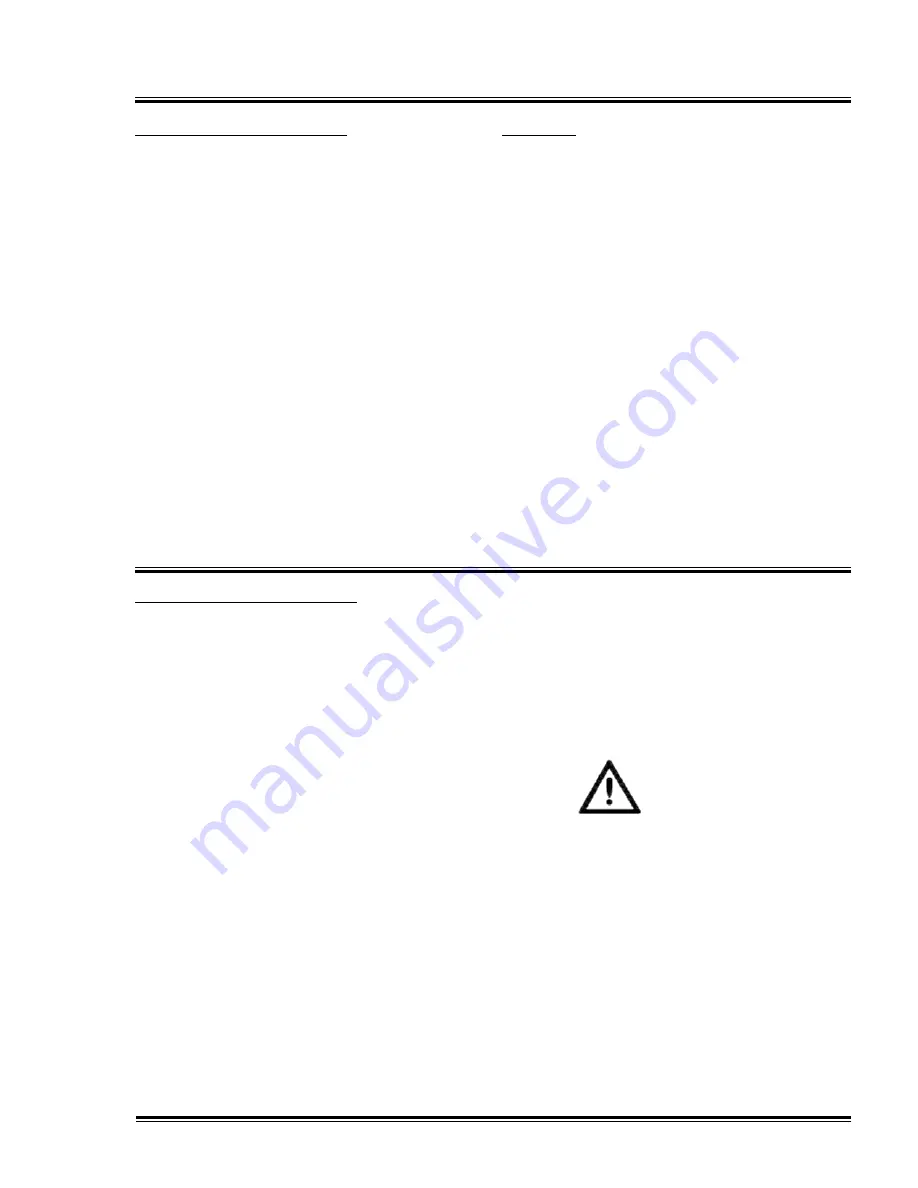
Section II - Description
The Compression Cycle
The compression cycle of a rotary
compressor is a continuous process from
intake to discharge with no reciprocating
mechanisms starting and stopping as
found in reciprocating compressors.
As the rotors rotate, (male-clockwise as
viewed from the power input end) air is
drawn into the cylinder through the inlet
port located at the power input end. A
volume of air is trapped as the rotor lobes
pass the inlet cut off points in the cylinders.
Compression occurs as the male rotor
rolls into the female flute, progressively
reducing the space thereby raising the
pressure. Compression continues until
the lobe and flute pass the discharge port.
The compressed air is then discharged
into the air/fluid reservoir. There are four
complete compression cycles for each
complete rotation of the male rotor.
Air Flow
With the compressor operating, a partial
vacuum is produced at the compressor
inlet. Air entering via the compressor air
filter flows through the air inlet valve into
the rotor housing where it is compressed,
then discharged into the air/fluid reservoir.
Compressed air passes through the
complete system then through a minimum
pressure check valve to the service
connection.
Capacity Control System
The capacity control system on QGV
compressors is a start/stop control which
varies air delivery based on target pressure
(usage).
As the motor begins driving the
compressor rotors, air is drawn in,
compressed and discharged into the
air/fluid reservoir. When the air pressure
in the reservoir exceeds the set point,
the QGV variable speed drive begins
controlling the speed of the compressor.
The drive matches air delivery of the
compressor to air usage in the plant,
maintaining pressure at the target pressure
(± psi).
If a reduction in usage is experienced,
the drive will slow to compensate for the
reduction. If the drive speed slows to 600
RPM (indicating that no air is needed), the
drive will shut down the compressor. The
compressor will restart automatically when
demand returns.
Warning!
Never assume it is safe to work on a
compressor because it is not operating.
It may be in standby mode and could
restart at any time. Follow all safety
instructions in the “Preparing for
Maintenance or Service” section.
Quincy Compressor-QGV Series
7
Summary of Contents for QGV Series
Page 2: ......
Page 6: ......
Page 17: ...Section II Description This page intentionally left blank Quincy Compressor QGV Series 11...
Page 74: ...Appendix A Dimensional Drawings QGV 50 air cooled 68 Quincy Compressor QGV Series...
Page 75: ...Appendix A Dimensional Drawings QGV 50 water cooled Quincy Compressor QGV Series 69...
Page 76: ...Appendix A Dimensional Drawings QGV 75 100 air cooled 70 Quincy Compressor QGV Series...
Page 77: ...Appendix A Dimensional Drawings QGV 75 100 water cooled Quincy Compressor QGV Series 71...
Page 78: ...Appendix A Dimensional Drawings QGV 150 200 air cooled 72 Quincy Compressor QGV Series...
Page 79: ...Appendix A Dimensional Drawings QGV 150 200 water cooled Quincy Compressor QGV Series 73...
Page 89: ......














































